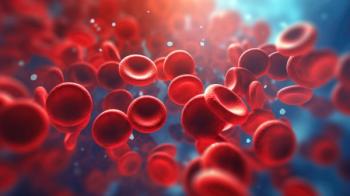
Investigating Contamination in Biocompatible LC Systems
Biocompatible LC systems are generally regarded to be chemically more inert than conventional HPLC systems. However, a study into the chromatographic behaviour of some classes of compounds analysed on these iron-free HPLC systems revealed issues typically associated with metal contamination.
Biocompatible liquid chromatography (LC) systems are generally regarded to be chemically more inert than conventional high-performance LC (HPLC) systems. However, a study into the chromatographic behaviour of some classes of compounds analysed on these iron-free HPLC systems revealed issues typically associated with metal contamination (1).
Biocompatible systems do not use stainless steel parts in the fluidic path for various reasons, including the interference of the iron solid surfaces with some biomolecules, resulting in lower sample recovery and higher peak tailing (2). Another function for these systems is to avoid rust formation when using ion exchange chromatography (IEX) and size exclusion chromatography (SEC) for protein characterization where analyses are typically run with very high concentrations of sodium chloride leading to corrosion. Instead biocompatible materials, such as polyether ether ketone (PEEK) or titanium alloys, are used, although the latter are preferred in parts exposed to high pressures.
Titanium has excellent mechanical behaviour and corrosion resistance justifying its use in HPLC systems. The titanium dioxide passivation layer which spontaneously forms when the metal is exposed to air or water prevents corrosion from high salt concentrations, and generally provides corrosion resistance. However, a number of studies have indicated that titanium may suffer from corrosion or stress-corrosion when exposed to anhydrous methanol (1), methanol-hydrogen chloride mixtures (3), and some other organic solvents (4). Importantly, this corrosion does not lead to mechanical failures. The parts where titanium is used, such as pump heads or eluent mixers, are extremely durable and rarely fail. The corrosion takes place on a microscopic scale, constantly releasing minor amounts of titanium ions into the mobile phase, potentially affecting the obtained results with the effect differing depending on the variables of the analysis.
In this particular study, unusually high peak tailing and reduced retention of veterinary drugs was observed, which indicated an unwanted metal contaminant. The aim of the study was to identify the source of this contaminant and provide a mechanism capable of explaining the loss of retention and peak tailing, as well as identifying measures to avoid the metal contamination in the future.
Corrosion of titanium alloys when using an anhydrous mixture of acetonitrile and methanol was identified as the source. The study used a polar-embedded stationary phase with no clear effects being observed in a conventional C18 reversed-phase. The mechanism by which the titanium ions were produced was thought to be based on the formation of complexes between fluoroquinolones and the titanium immobilized in the stationary phase.
Furthermore, the researchers anticipated that this effect could occur in any stationary phase capable of immobilizing titanium cations and the analyte is a metal chelating molecule.
As to potential solutions? The researchers identified literature that detailed that the effect of corrosion can be completely inhibited by including small amounts of water in the organic solvent, and highlighted the lack of corrosion in conventional C18 reversed-phases as an indicator of the importance of selecting the correct phase for the analysis.
References
- M. De Pra, G. Greco, and M.P. Krajewski et al., Journal of Chromatography A. 1611, 1–10 (2020).
- B. Preinerstorfer et al., J. Chromatogr. A.1217, 312–328 (2010).
- K. Ebtehaj, D. Hardie, and R.N. Parkins, Corros. Sci. 25, 415–429 (1984).
- R.W. Schutz, Corrosion of titanium and titanium alloys, in: S.D. Cramer, B.S. Covino Jr. (Eds.), Corrosion: Materials, ASM Handbook, 13B, 2005, pp. 252–299, doi: 10.31399/asm.hb.v13b.a0 0 03822.
Newsletter
Join the global community of analytical scientists who trust LCGC for insights on the latest techniques, trends, and expert solutions in chromatography.




